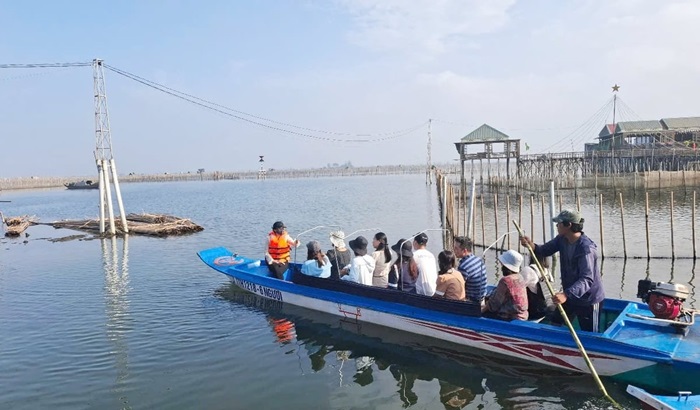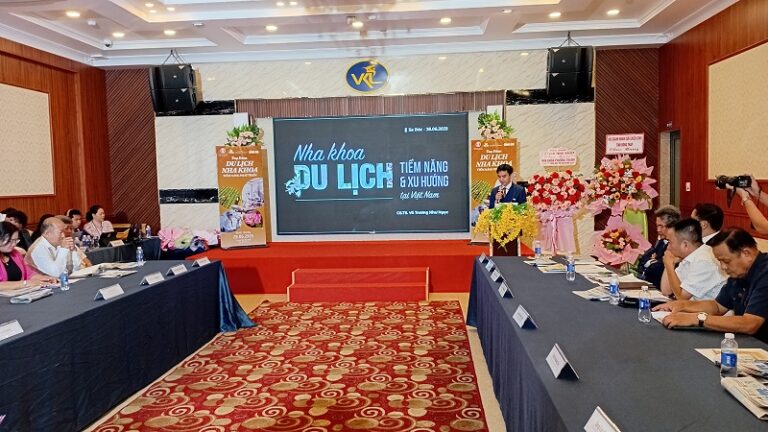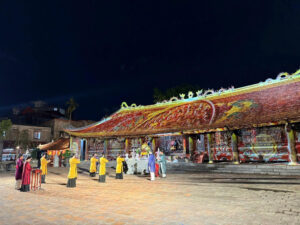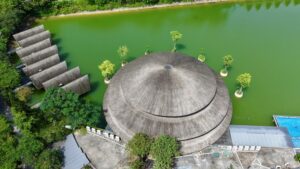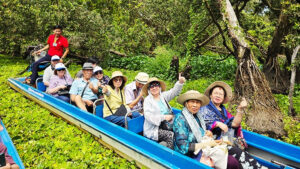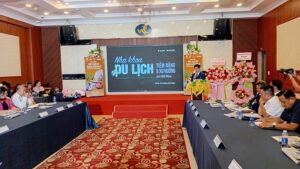“Pearl Island” Phu Quoc is a large tropical island off the coast of Vietnam. It is the biggest one in the 22-island complex of Vietnam in the Gulf of Thailand, Kien Giang province.
Its northeast cape is 4 sea miles from the neighbor Cambodia. The island is 62 sea miles east of Kien Giang capital (Rach Gia town), and 25 sea miles from Ha Tien town. Phu Quoc together with other 22 islands makes up an island district of 56,500 hectares in total area, which approximates that of Singapore island nation whereas Phu Quoc itself has a total area of as much as 574 sq. km, in a triangular shape. Some author has compared the island to a swimming fish with its head turning to the North. Phu Quoc is ringed with some of most beautiful beaches and best seafood in Vietnam, promising quite a few absorptive elements for tourists.
Climate
Phu Quoc is featured with a monsoon tropical climate (hot, wet and rainy), but its special location in Gulf of Thailand minimizes natural calamities. It has two seasons, dry season from December to May, and rainy season from June to November. The former is affected by Northeast monsoon with an average humidity of 78%, temperature goes up to 35oC as the highest in April and May. In rainy season, the island acts as the gateway to West-South West monsoon. The annual average rainfall is around 3,000 mm.
History
The island has a special name attached to an interesting historical story. In 1671, about 400 Chinese people led by a man from Guang Dong, China took a ship to cross the ocean to reach and settle down in a wild islands land in the Gulf of Thailand.
In 1680, they established a series of hamlets, which were scattered around in the land. Some soon became significant commercial ports where ships, boats and junks gathered and traded with one another. The increasingly bustling and eventful atmosphere led to their idea of setting up 7 casinos, each in an individual island, one of which was situated in Koh Tral Island (today’s Phu Quoc Island). The success of commercial and entertainment activities resulted in that the whole island area was renamed into “Căn Khẩu quốc” or “Kingdom of Prosperity”, and Koh Tral island was also recalled “Phu Quoc” (Phu Quoc: “Fu Guo” in Chinese transcription), which meant an Affluent Land in Vietnamese.
Phu Quoc Island served as a base for French missionary Pigneau de Behaine from the 1760-80s and once provided shelter for Prince Nguyen Anh (later Emperor Gia Long) when he was hunted by the Tay Son rebels. During the Vietnam War, there was little fighting here but the Island was used by the Americans as a prison for captured Viet Cong.
The island of today still retains what was expressed in its righteous name in the past, and has become one of the nation’s ideal tourist destinations to lure huge numbers of visitors.


